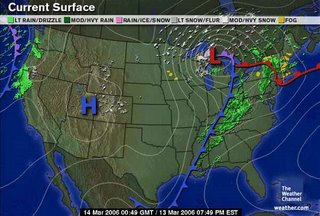YOU KNOW WHAT REALLY TICKS ME OFF???

You know what really ticks me off? I've been trying to watch that show a lot, it is a great show and gives you a sense of intelligence, but anyway, it does not give me great satisfaction to know that in the last several weeks, a majority of the players are or at one time have been Canadian residents. In America, are we so morbidly obese and lack the necessary though to answer intellectual questions that we need to bring in Canadians to fill the voids in our smart shows? And that is what ticks me off!!!

You know what really ticks me off? Shows that are amazing and are classics keep ending before their prime is over. It is not fair that shows such as Everbody Loves Raymond (1996-2005), The Cosby Show (1984-1992), and Seinfield (1989-1998) stay on for 9 years, which in the television world is considered a long time, but shows such as Friends (1994-2004), Frasier (1993-2004), and Beverly Hills 90210 (1990-2000), stay on the air for 10+ years. Every season, we see shows that are terrible, but continue to grace us for seasons to come. Each time i turn on my television i dred seeing what crappy new comedy or sitcom is being plugged. For example, the King of Queens (1998-2006), which is finally ending, gets 8 years of medicore television, and shows on such a higher plateau it is inpossible to describe such as The Drew Carey Show (1995-2004) only get 9 years. These shows like Drew Carey, Seinfield, and Home Inporvement (1993-1999), are based around the main star and their desires and wishes, something needs to be done. Although major networks all have their mistakes, i think FOX takes the cake, seeing as even their own shows such as the Simpsons and Family Guy make funny of them constantly. Wanda at Large, The Tick, Bobby's World, Futurama, 413 Hope Street, they are a disgrace to t.v, and t.v has not have time to recover. And that is what ticks me off.

You know what really ticks me off? I've been trying to watch that show a lot, it is a great show and gives you a sense of intelligence, but anyway, it does not give me great satisfaction to know that in the last several weeks, a majority of the players are or at one time have been Canadian residents. In America, are we so morbidly obese and lack the necessary though to answer intellectual questions that we need to bring in Canadians to fill the voids in our smart shows? And that is what ticks me off!!!

You know what really ticks me off? Shows that are amazing and are classics keep ending before their prime is over. It is not fair that shows such as Everbody Loves Raymond (1996-2005), The Cosby Show (1984-1992), and Seinfield (1989-1998) stay on for 9 years, which in the television world is considered a long time, but shows such as Friends (1994-2004), Frasier (1993-2004), and Beverly Hills 90210 (1990-2000), stay on the air for 10+ years. Every season, we see shows that are terrible, but continue to grace us for seasons to come. Each time i turn on my television i dred seeing what crappy new comedy or sitcom is being plugged. For example, the King of Queens (1998-2006), which is finally ending, gets 8 years of medicore television, and shows on such a higher plateau it is inpossible to describe such as The Drew Carey Show (1995-2004) only get 9 years. These shows like Drew Carey, Seinfield, and Home Inporvement (1993-1999), are based around the main star and their desires and wishes, something needs to be done. Although major networks all have their mistakes, i think FOX takes the cake, seeing as even their own shows such as the Simpsons and Family Guy make funny of them constantly. Wanda at Large, The Tick, Bobby's World, Futurama, 413 Hope Street, they are a disgrace to t.v, and t.v has not have time to recover. And that is what ticks me off.

